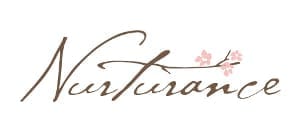In this article, I will address an often overlooked contributing factor to what causes a prolapsed bladder. I had an interesting experience with a woman who had a stage 3 cystocele (bladder prolapse). The general listening (to evaluate for restrictions) led me to the lower left quadrant of the belly. The local listening took me to the bladder, and from there I followed a lesion chain deep into the obturator fascia. The bladder is closely related to the obturator foramen via fascia. After applying a technique I learned in my Visceral Manipulation™ training, I felt a release between the two structures. The client later reported that she had immediate relief from her symptoms. The dragging, burning sensation dissipated, and she regained the ability to completely empty her bladder. Her symptoms did, however, return, but her OBGYN reported an improvement from a stage 3 to a stage 2 bladder prolapse.
This is fascinating to me, and I would like to know how it is related to whole-body alignment.

“Fluoroscopy has revealed the effectiveness of manipulation of the obturator foramen during bladder treatment. Pressure on the obturator can elevate a ptosed bladder by 2cm.”- Jean-Pierre Barral Urogenital Manipulation
The lower leg as a Cause of Bladder Prolapse
“Restrictions in the legs and feet are usually explained by the chain of fasciae, and the relentless force of gravity. Proximal and distal restrictions of the fibula are common. The bladder and its attachments depend upon the internal obturator and its aponeurosis. They share many fibers with the sacrospinous and the sacrotuberous, which in turn exchange fibers with the biceps femoris. The latter inserts into the head of the fibula-one explanation for the lesion chain between the fibula and bladder. More rarely, bladder problems may be associated with restrictions of the distal tibiofibular joint, navicular bone, or the fifth metatarsal. In some cases, we have mobilized bladders (as verified by fluoroscopy) simply by pressing the navicular, whereas the same pressure exerted on nearby sites provoked no movement at all.” Jean-Pierre Barral (1)
Another fascinating connection proving that the root of the problem isn’t always where you might think.
Bladder and Uterine Prolapse Q & A
Stage 1 Bladder Prolapse
Question: I have a stage 1 uterine prolapse. Can this heal completely with osteopathic therapy or with the womb care course you’re offering right now? So far, I have seen improvement with physiotherapy and acupuncture, but I need more help, it seems.
Answer: I have seen excellent results with stage one and two prolapses, and moderate to good results in stage three prolapse (once a complete reversal) with diligent self-care, massage, and alignment awareness. The self-care massage and pelvic alignment exercises I teach in the Womb Care course work well for uterine and bladder prolapse.
Is there hope in curing my cystocele and rectocele?
Question: I’ve been diagnosed with stage 1 cystocele and stage 2 rectocele. The cystocele isn’t too bothersome, but the rectocele is. I’m 22 and dream of having more kids, but this condition has got me very down. Is there any hope of ‘curing’ it? Or are the doctors right when they say it’s either a lifetime of maintenance or surgery?
Answer: As always, it really depends on the severity. Since you are 22 and, as noted in the FB post, you just had a baby 5 months ago, there is hope of reversal. On average, tissues take 2-3 years to recover after birth.
Check out the suggestions in my prolapse article: https://alignmentmonkey.nurturance.net/2012/prolapsed-uterus/. Even though the article is regarding uterine prolapse, many of the suggestions apply to bladder and rectum prolapse.
Author: Barbara Horsley has more than 26 years of experience as a licensed massage therapist. She specializes in abdominal massage and Visceral Manipulation™ and is an NCBTMB-approved educator. In addition to being certified in abdominal massage, she also studied biomechanics and restorative exercise. She is also a Certified Women’s Herbal Educator and a graduate of the IWHI Perimenopause & Menopause Certificate Program.

